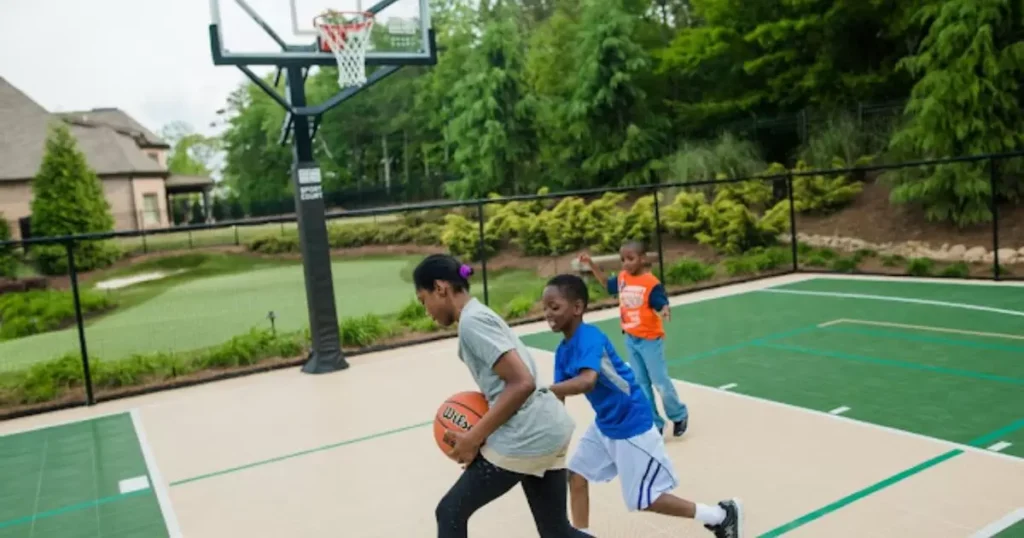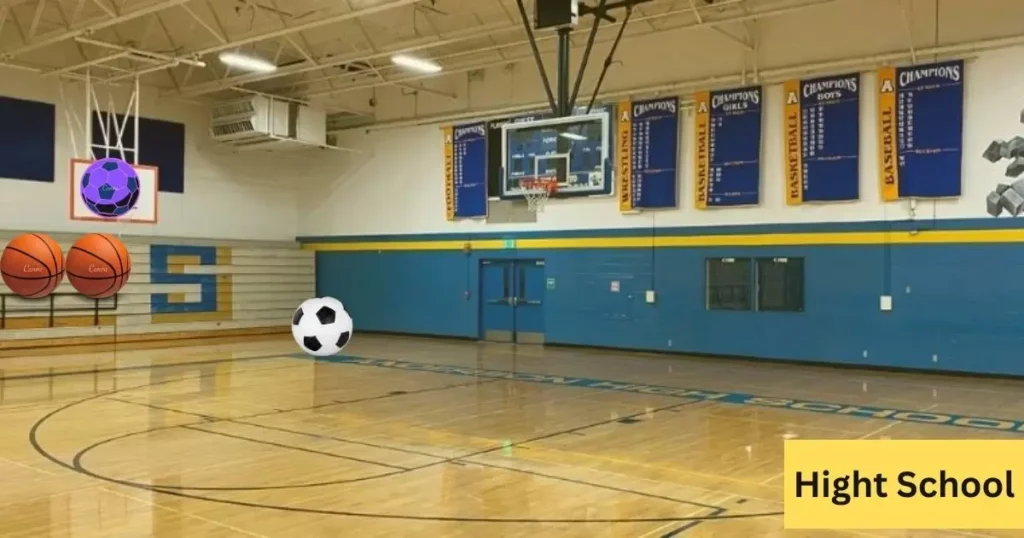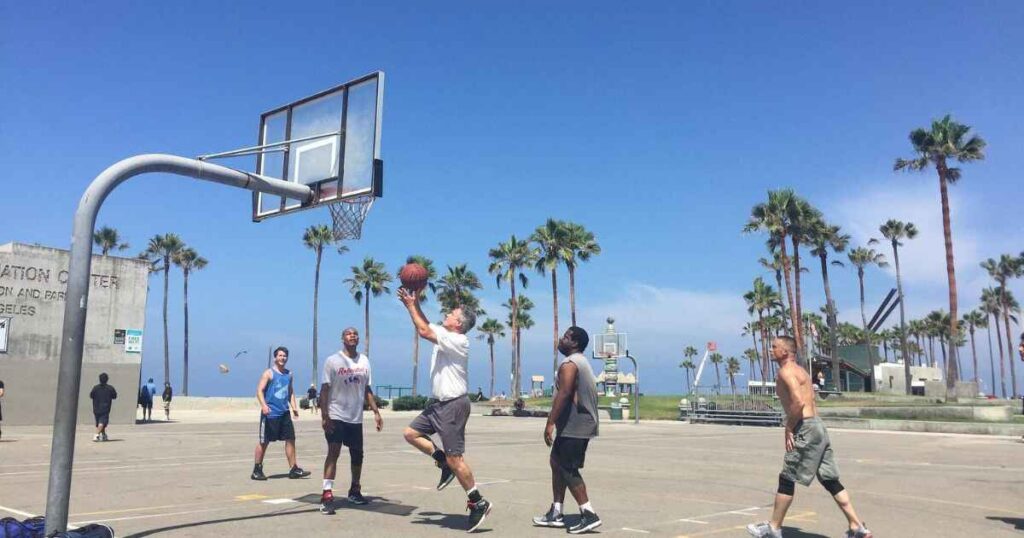A basketball court is a rectangular surface with two baskets and specific markings for gameplay. Court dimensions vary by level, from junior high to professional leagues affecting how many laps equal a mile. For instance, an NBA court measures 94 feet by 50 feet. While a high school court is typically 84 feet by 50 feet, with junior high courts often smaller.
Fitness enthusiasts and basketball fans often wonder how many laps it takes to run a mile on a court, combining a love for the game with efficient workouts. Understanding these variations helps determine the exact number of laps needed on different courts to cover a mile.
College Basketball Courts
When it comes to college basketball courts, the dimensions are pretty standard across the board. These courts typically measure 94 feet in length and 50 feet in width. To calculate the distance around the court. We need to consider the perimeter.
By adding up the length and width and multiplying by two, we get 288 feet for one complete lap. Now, since a mile is 5,280 feet. We can divide this by our lap distance. It takes about 18.33 laps around a basketball court to complete a mile on a college court. Imagine that you could be running a mile while reliving your favorite March Madness moments.
Benefits of Basketball Court Runs

Running laps on a basketball court isn’t just about hitting that mile mark. It comes with a whole roster of benefits that can elevate your fitness game. From heart health to mental sharpness, court runs offer a unique workout experience that combines the best of traditional running with the excitement of being on the hardwood.
Let’s dive into some of the key advantages you will score by incorporating basketball court laps into your fitness routine. These benefits might just convince you to trade in your treadmill for some court time.
Cardiovascular Health
Court runs are a slam dunk for your heart. The stop-and-go nature of navigating court boundaries mimics the intensity of actual gameplay, providing an excellent cardiovascular workout. This type of exercise can improve your heart rate variability and overall cardiac function, potentially lowering your risk of heart disease.
Interval Training
The layout of a basketball court naturally lends itself to interval training. As you run laps, you’re forced to slow down and change direction at each corner, creating a built-in high-intensity interval training (HIIT) session. This can boost your metabolism, improve your endurance, and help you burn more calories than steady-state cardio.
Leg Strength and Agility
Running on a court is not just about forward motion. The frequent turns and changes in pace work your legs from multiple angles, enhancing both strength and agility. This can translate to better performance on the court. You are driving to the hoop or defending against a fast break.
Mental Agility
Keeping track of your laps while navigating the court can be a mental workout in itself. This cognitive engagement can improve your focus and spatial awareness, skills that are crucial both on and off the court. Plus, the familiar basketball environment can make your workout feel more like play than exercise.
Variety in Routine
Let’s face it running on a track or treadmill can get monotonous. Basketball court runs add variety to your fitness regimen keeping things fresh and exciting. You can even incorporate ball-handling drills or shooting practice between laps for a full-body basketball-inspired workout.
Read More: What is Sportssurge: Revolutionizing the World of Sports
NBA Courts
When it comes to the big leagues, NBA courts share the same dimensions as their collegiate counterparts. Measuring 94 feet long and 50 feet wide, these professional courts offer the same lap-to-mile ratio as college courts. That means you’re looking at about 18.33 laps to cover a mile on an NBA court.
Imagine running a mile on the same court where LeBron James scores his famous buzzer-beaters or where Steph Curry sinks impossible three-pointers. It’s not just a workout; it’s a chance to follow in the footsteps of basketball legends. And who knows? Maybe all those laps will improve your own game!
Junior High School Basketball Court

Junior high school basketball courts typically come in smaller packages, which means a different calculation for our mile run. These courts usually measure about 74 feet in length and 42 feet in width. So, how does this affect our lap count?
The perimeter of a junior high court comes to 232 feet (74 + 42, multiplied by 2). Divide our mile (5,280 feet) by this perimeter and we get approximately 22.75 laps. You will be running more laps on a junior high court to hit that mile mark but do not let that discourage you. Think of it as more opportunities to practice those tight turns.
Determining the Laps Required to Basketball Court
Figuring out how many laps to cover a mile on any basketball court is a straightforward process once you know the formula. Here’s a simple guide to help you calculate the laps for any court size:
- Measure the length and width of the court in feet.
- Add these two numbers together and multiply by 2 to get the perimeter.
- Divide 5,280 (feet in a mile) by your perimeter result.
High School Basketball Court
High school basketball courts often strike a middle ground between junior high and college courts. A typical high school court measures 84 feet long and 50 feet wide. Using our trusty calculation method, we can determine that the perimeter of a high school court is 268 feet.
So, how many laps around this court equal a mile? Dividing 5,280 by 268 gives us approximately 19.7 laps. That’s just under 20 laps to hit your mile goal on a high school court. This knowledge could revolutionize PE classes, giving students a concrete fitness goal that combines basketball skills with endurance training.
Also see: Amina Hachimura: The Hidden Gem Behind Rui Hachimura’s Success
Factors Determining the Distance Basketball Court is a Mile

While we have covered the basic calculations for different court sizes. There are several factors to keep in mind when determining how many laps around a basketball court is a mile. Court variations, running style and even the shoes you wear can all impact your actual distance covered.
For instance outdoor courts might have slightly different dimensions than indoor ones. Your running path. You stick close to the lines or cut wide around corners can also affect your total distance. And do not forget about your pace; a leisurely jog will result in a different step count than a full out sprint.
| Factor | Impact on Distance |
| Court Size | Directly affects lap count |
| Running Path | Can increase or decrease distance per lap |
| Pace | Influences step count and perceived effort |
| Footwear | Affects stride length and comfort |
| Surface | Indoor vs. outdoor can change running dynamics |
Conclusion
Running laps on a basketball court is not just about reaching a mile. It is a slam dunk for fitness. You are circling an NBA court or a junior high school basketball court. You are scoring points for your health. Remember, the number of laps to cover a mile varies with court size, but the benefits remain constant. So lace up, hit the hardwood and turn your hoop dreams into fitness goals. Who knew calculating the perimeter could lead to such an exciting workout? Now, get out there and run circles around your fitness routine.
Frequently Asked Questions
Is the Distance the Same for All Basketball Courts?
College and NBA courts require 18.33 laps per mile highschool courts need 19.7 laps and junior high courts require 22.75 laps.
Can I Use This Calculation for Any Physical Activity?
These lap calculations are a general guide but different activities like dribbling may affect your pace and actual distance covered.
How Long Does It Take to Complete a Mile by Walking or Running Laps Around a Basketball Court?
The time to complete a mile on a basketball court varies with speed 15-20 minutes walking, 10-12 minutes jogging and 5-7 minutes sprinting with frequent turns potentially slowing you down.
Are There Variations in the Size of Basketball Courts?
Basketball court dimensions vary with standard sizes for college and NBA courts, while junior high, high school and recreational courts may differ so always measure for an accurate lap count.

